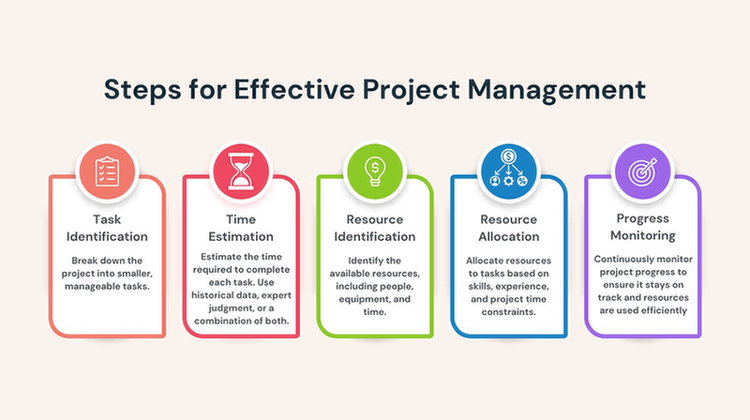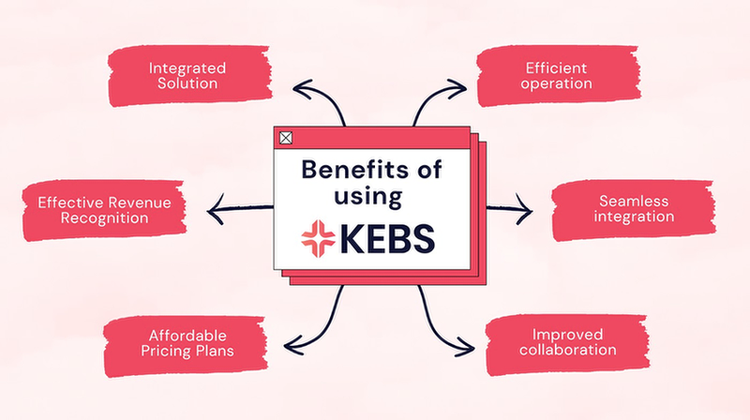
Home »
Managing Resource Workloads and Capacity in PSA
Master the art of resource workload and capacity management in PSA. Discover strategies for resource allocation
What is Resource Capacity Planning?
Resource capacity planning is the process of figuring out how many people, equipment, and time you need to complete a project. It helps you make decisions about whether to hire more people, postpone a project, or change the scope of a project.
Here are some of the benefits of resource capacity planning:
- You are more likely to complete projects on time and within budget.
- You save money on labor costs.
- Employees are happier because they are not overworked or underworked.
- You make better decisions about project timelines, budgets, and resources.
If you want to improve your project management process, resource capacity planning is a great place to start.
What is Workload Capacity Planning?

Workload capacity planning is a way to figure out how many people with what skills you need to complete all of your projects. It helps you ensure that you have enough people with the right skills to do the work and that they are well-rested and well-rested.
Here are some of the benefits of workload capacity planning:
- You are more likely to complete projects on time and within budget.
- You avoid employee burnout and turnover.
- You make better decisions about project timelines, budgets, and resources.
If you want to improve your project management process, workload capacity planning is a great place to start.
How to Use Workload Capacity Planning for Project Management
Workload capacity planning can be used to improve the success of projects by ensuring that the right resources are available when they are needed. It can also help to identify potential bottlenecks and risks early on, so that they can be addressed before they cause problems.
Here are some steps on how to use workload capacity planning for project management:
- Identify the tasks that need to be completed. This includes breaking down the project into smaller, more manageable tasks.
- Estimate the time it will take to complete each task. This can be done by using historical data, expert judgment, or a combination of both.
- Identify the resources that are available. This includes people, equipment, and time.
- Allocate resources to tasks. This can be done by considering the skills and experience of the available resources, as well as the time constraints of the project.
- Monitor progress and make adjustments as needed. This is an ongoing process that ensures that the project is on track and that resources are being used efficiently.
| Workload Capacity Planning for Project Management | Using workload capacity planning to enhance project success by ensuring resource availability, identifying bottlenecks, and mitigating risks. |
| Steps for Workload Capacity Planning | Outlining the steps to utilize workload capacity planning in project management: |
| 1. Identify Tasks | Breaking down the project into manageable tasks for better planning. |
| 2. Estimate Task Time | Estimating task completion time using historical data or expert judgment. |
| 3. Identify Resources | Identifying available resources, including people, equipment, and time. |
| 4. Allocate Resources | Assigning resources to tasks, considering skills and time constraints. |
| 5. Monitor and Adjust | Ongoing monitoring to ensure project progress and efficient resource utilization. |
How to Prevent Problems with Effective Workload Capacity Planning
An effective capacity plan can help to address key project challenges, such as:
- Scheduling delays: When there are not enough resources available, projects can be delayed. This can lead to missed deadlines, unhappy customers, and financial losses.
- Increased errors and accidents: When team members are overworked, they are more likely to make mistakes. This can lead to errors in work, accidents, and injuries.
- Unnecessary project expenditures: When resources are misaligned with project goals, unnecessary costs can be incurred. This can lead to budget overruns and financial losses.
- Poor quality of project deliverables: When resources are not aligned with project goals, the quality of project deliverables can suffer. This can lead to dissatisfied customers and financial losses.
If these challenges are not addressed, they can lead to organizational challenges, such as:
- Employee burnout: When employees are overworked and undervalued, they are more likely to experience burnout. This can lead to absenteeism, decreased productivity, and increased turnover.
- High staff turnover rates: When employees are unhappy with their jobs, they are more likely to leave the organization. This can lead to increased costs for recruiting and training new employees.
- Talent shortage: When there is a shortage of qualified talent, it can be difficult to find the resources needed to complete projects. This can lead to delays, cost overruns, and poor quality of deliverables.
- Reputational damage: When employees are not engaged or when customers are dissatisfied, it can damage the organization’s reputation. This can lead to lost sales, decreased market share, and financial losses.
The Basic Steps of Workload Capacity Planning

- Identify the tasks that need to be completed. This includes breaking down the project into smaller, more manageable tasks.
- Estimate the time it will take to complete each task. This can be done by using historical data, expert judgment, or a combination of both.
- Identify the resources that are available. This includes people, equipment, and time.
- Allocate resources to tasks. This can be done by considering the skills and experience of the available resources, as well as the time constraints of the project.
- Monitor progress and make adjustments as needed. This is an ongoing process that ensures that the project is on track and that resources are being used efficiently.
Techniques and Strategies for Workload Capacity Planning
Use a variety of capacity planning techniques. There is no one-size-fits-all approach to capacity planning. The best approach will vary depending on the specific project and organization. By using a variety of techniques, you can get a more accurate picture of your capacity and make better decisions about how to allocate resources.
- Choose the right capacity planning strategy: The choice of a capacity planning strategy will depend on the size of an organization as well as the number of projects and resources in it. By choosing the right strategy, you can ensure that your organization has the capacity it needs to meet demand.
- Monitor capacity regularly: Capacity planning is an ongoing process. It is important to monitor capacity regularly and make adjustments as needed. This will help to ensure that your organization is always prepared to meet demand.
- Get input from stakeholders: Capacity planning is a team effort. It is important to get input from all stakeholders, including project managers, team members, and executives. This will help to ensure that the capacity plan is realistic and achievable.
- Use project management software: Project management software can help you to track progress, identify bottlenecks, and make adjustments to your capacity plan as needed.
Key trends within resource and capacity management

- Increasing margin control through integrated tools: Integrated tools can help organizations to improve margin control by providing a single view of all project-related data. This data can be used to track costs, resources, and schedules, which can help organizations to identify areas where they can improve efficiency and reduce costs.
- Improved operational control of project resources: Having a clear understanding of where resources are allocated and how they are being used is essential for improving operational control of project resources. This information can be used to ensure that resources are used efficiently and that projects are completed on time and within budget.
- Automating firm scheduling, tasks, and roles: Automating repetitive tasks can free up time for employees to focus on more strategic work. This can lead to increased productivity and improved efficiency.
- Pipeline capacity management optimization: Having a system in place to track demand and capacity can help organizations to ensure that they have enough resources to meet demand. This can help to avoid over-allocation of resources, which can lead to delays and cost overruns.
- Increasing resource visibility through the use of a PSA solution: A PSA solution can provide organizations with visibility into all aspects of their projects, including resources, costs, and schedules. This information can be used to improve communication and collaboration, which can lead to better decision-making.
The Best Software for Workload Capacity Planning

Here comes KEBS an all-in-one project management solution that can help you improve your workload capacity planning. It includes features such as Gantt charts, automated task creation, and audit productivity.
These features can help you visualize your workload, track your progress, and identify areas where you can improve. KEBS is a great option for businesses of all sizes that need a comprehensive project management solution.
Here are some of the benefits of using KEBS for workload capacity planning:
- Improved visibility: KEBS provides a single view of all your projects, which can help you to improve visibility and make better decisions.
- Improved collaboration: KEBS makes it easy to collaborate with team members, which can help to improve communication and productivity.
- Reduced risk: KEBS can help to reduce risk by providing a framework for managing projects and ensuring that they are completed on time and within budget.

Benefits of using KEBS
Here are some additional tips for workload capacity planning with KEBS:
- Start by identifying your resources: What skills and experience do you have available? What resources do you need to complete your projects?
- Estimate the time and effort required for each task: How long will it take to complete each task? How much effort will it require?
- Create a workload capacity plan: This plan should outline the tasks that need to be completed, the resources that are available, and the time and effort required for each task.
- Track your progress and make adjustments as needed: As you work on your projects, be sure to track your progress and make adjustments to your workload capacity plan as needed.
| Additional Tips for Workload Capacity Planning with KEBS | Enhance workload capacity planning using KEBS with these practical tips: |
| 1. Identify Resources | Start by identifying available resources in terms of skills, experience, and needed resources. |
| 2. Estimate Task Time and Effort | Estimate the time and effort required for each task to create an accurate workload assessment. |
| 3. Create a Workload Capacity Plan | Develop a plan detailing tasks, available resources, and time and effort estimates. |
Conclusion
By following these tips and by using KEBS to improve your workload capacity planning and make your projects are completed on time and within budget.
To learn more about workload capacity planning with KEBS, visit our website
Try the demo of your growth here, if any issues or discussions Contact Us









